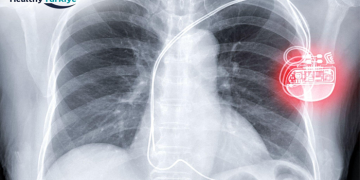Most women experience menopausal symptoms four years before their final menstruation. Symptoms might remain for up to four years following a woman’s last menstruation. A tiny percentage of women have menopausal symptoms for up to a decade before menopause, and 1 in 10 women have menopausal indications for 12 years after their last period. Menopause is a natural procedure that your body goes through. In certain circumstances, menopausal therapy is not required. When discussing menopausal therapy with Dr. Richard Strathmann, the focus is on treating the symptoms of menopause that are interfering with your life. There are several therapies available for menopausal symptoms. Hormone therapy and non-hormonal therapies are the two essential modalities of menopause treatment.
Causes of natural menopause
Natural menopause is the lifelong end of menstruation induced by no medical treatment. Natural menopause is a gradual process that is divided into three stages:
- Perimenopause (menopause transition) – occurs eight to ten years before menopause, when the ovaries gradually release less estrogen. It generally begins in your forties. Perimenopause lasts until menopause, when the ovaries cease producing eggs. The estrogen reduction worsens in the last one to two years of perimenopause. Many women may be experiencing menopausal indications at this point. However, they can still experience menstrual periods and can become pregnant.
- Menopause – is when you no longer have menstrual cycles. Your ovaries have finished generating eggs and the majority of estrogen. This phase is discovered when you have not had a menstrual cycle for 12 months.
- Postmenopause – is the term used to describe the period-free duration of a year (the rest of your life after menopause). Many women may experience relief from menopausal symptoms, such as hot flashes, at this time. However, some women continue to have menopausal symptoms for a decade or more following menopause. Postmenopausal women are more prone to have osteoporosis and heart disease since their estrogen levels are decreased.
Can menopause trigger facial hair growth?
Yes, increasing facial hair growth might be a sign of menopause. The hormonal fluctuations that your body experiences throughout menopause might result in physical changes such as more facial hair than you previously had. This is due to testosterone being more abundant than estrogen. If facial hair becomes an issue for you, waxing or other hair removal methods may be possible.
Menopause is the natural end of a woman’s menstrual cycle, indicating the cessation of fertility. Most women reach menopause by 52, although a pelvic or ovarian injury might trigger premature menopause. Early menopause can also be caused by genetics or underlying diseases. Many women have menopausal symptoms in the few years preceding menopause, most often hot flashes, night sweats, and flushing. Symptoms may last four or more years following menopause. If your signs are severe or affecting your quality of life, you may benefit from treatment, such as hormone therapy. Also, menopause symptoms may often be treated or minimized with natural medicines and lifestyle changes.
It is critical to consult with your healthcare physician when going through menopause to develop a treatment plan that works for you. Everyone is unique and has various demands. Call Women’s Healthcare Physicians of Naples or book your appointment online to learn more about the available menopause treatments.














